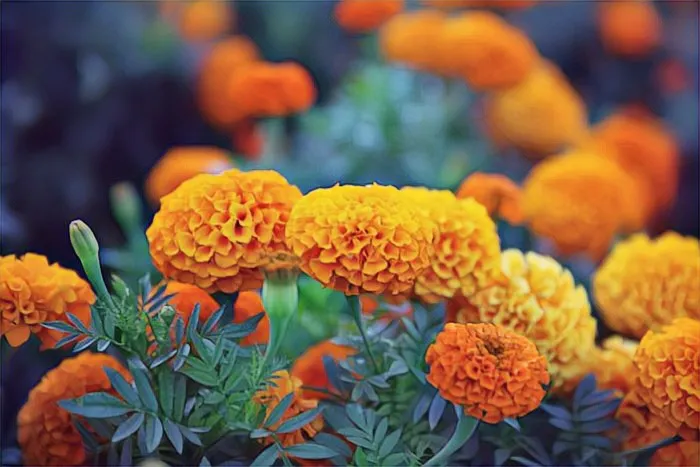Marigold flowers, known for their vibrant orange and yellow hues, are among the most popular and easiest flowers to cultivate. They belong to the genus Tagetes and are members of the Asteraceae family. This family also includes other well-known flowers such as daisies, sunflowers, and chrysanthemums. The marigold genus is composed of around 50 species, with the most commonly cultivated species being Tagetes erecta (the African marigold), Tagetes patula (the French marigold), and Tagetes tenuifolia (the signet marigold).
Origins and History
Marigolds are native to the Americas, with their history dating back to the Aztecs who valued them for their religious and medicinal significance. The flowers were believed to possess protective properties and were used in rituals and ceremonies. Spanish and Portuguese explorers brought marigolds back to Europe in the 16th century, where they gained popularity for their robustness and beauty.
Cultivation and Care
Marigolds are renowned for their ease of growth, making them a favorite among novice gardeners and experienced horticulturists alike. They thrive in full sun and can tolerate most soil types, although they prefer well-drained soil. These flowers can be grown in flower beds, borders, containers, and even vegetable gardens where they are used as companion plants to deter pests.
Sowing marigold seeds can be done directly in the garden or started indoors before the last frost. They typically germinate within a few days to a week. Marigolds bloom from early summer until the first frost, offering a long season of color. Deadheading, or removing spent flowers, encourages the plants to produce more blooms.

Uses and Benefits
Marigolds have a range of uses beyond their ornamental value. They are often planted in vegetable gardens as they are believed to repel harmful insects and nematodes in the soil with their pungent scent. Some species of marigolds are also used in the production of lutein, a compound with antioxidant properties often used in dietary supplements for eye health.
In addition to their practical applications, marigolds have cultural significance in various parts of the world. In Mexico, they are a symbol of the Day of the Dead (Día de los Muertos) and are used to decorate altars and graves. In India, marigolds are a staple in wedding decorations and religious ceremonies.

Varieties and Characteristics
Marigolds come in a range of sizes and colors. African marigolds boast large, pom-pom-like blooms, while French marigolds are smaller with a more delicate appearance. Signet marigolds are characterized by their dainty, single-petaled flowers and a lemony scent. Colors can vary from pale yellow to deep orange, with some varieties displaying multiple colors in a single bloom.
While often associated with warm colors, there are marigold varieties that have white and maroon flowers, adding to their versatility in garden design. The plants can range in height from a modest 6 inches (15 cm) to an eye-catching 3 feet (1 meter), depending on the variety.

Conclusion
Marigolds are more than just a pretty face in the garden; they are plants with a rich history, practical uses, and cultural importance. Their ease of care and ability to brighten up any space make them a beloved choice for gardeners around the world. Whether used for aesthetic, functional, or symbolic purposes, marigolds continue to be a timeless addition to landscapes and gardens everywhere.
All photo editing PicsArt